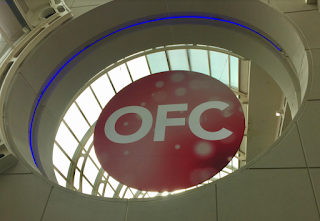Comcast carried a 600Gbps single wavelength with live commercial traffic across more than 800km between core peering locations in Newark, New Jersey, and Pittsburgh, Pennsylvania. Comcast also looped back the signal and verified successful operation of 600Gbps across 1,600-kilometers.
 The trial used Ciena's WaveLogic 5 Extreme technology. The deployment marks the first in Ciena’s Waveserver 5 form factor.
The trial used Ciena's WaveLogic 5 Extreme technology. The deployment marks the first in Ciena’s Waveserver 5 form factor.
Ciena said its WaveLogic 5 Extreme is designed to provide bandwidth tunability, from 200G to 800G, and adapt to constantly changing end-user demands with more capacity per wavelength and lower cost per bit.Waveserver 5 leverages WaveLogic 5 coherent technology to scale up to 12.8Tbps in a compact 2RU footprint. WL5e also facilitates the evolution to 400G-interface routers and universal 400GbE transport across any location in the Comcast National Backbone network without regeneration.
“As the largest fixed-broadband provider in the US, we know the way people consume media and data, in general, is changing and we’re committed to continue and support the increased customer demand with increased capacity across our network. This recent achievement allows us to benefit from Ciena's continued innovation in its coherent optical technology, optimizing both our network architecture as well as our overall cost per bit,” stated Noam Raffaelli, Senior Vice President, Network and Communications Engineering, Comcast.
https://www.ciena.com/about/newsroom/press-releases/comcast-and-ciena-achieve-600G-milestone-across-1600-kilometer-connection.html
 The trial used Ciena's WaveLogic 5 Extreme technology. The deployment marks the first in Ciena’s Waveserver 5 form factor.
The trial used Ciena's WaveLogic 5 Extreme technology. The deployment marks the first in Ciena’s Waveserver 5 form factor.Ciena said its WaveLogic 5 Extreme is designed to provide bandwidth tunability, from 200G to 800G, and adapt to constantly changing end-user demands with more capacity per wavelength and lower cost per bit.Waveserver 5 leverages WaveLogic 5 coherent technology to scale up to 12.8Tbps in a compact 2RU footprint. WL5e also facilitates the evolution to 400G-interface routers and universal 400GbE transport across any location in the Comcast National Backbone network without regeneration.
“As the largest fixed-broadband provider in the US, we know the way people consume media and data, in general, is changing and we’re committed to continue and support the increased customer demand with increased capacity across our network. This recent achievement allows us to benefit from Ciena's continued innovation in its coherent optical technology, optimizing both our network architecture as well as our overall cost per bit,” stated Noam Raffaelli, Senior Vice President, Network and Communications Engineering, Comcast.
https://www.ciena.com/about/newsroom/press-releases/comcast-and-ciena-achieve-600G-milestone-across-1600-kilometer-connection.html






















